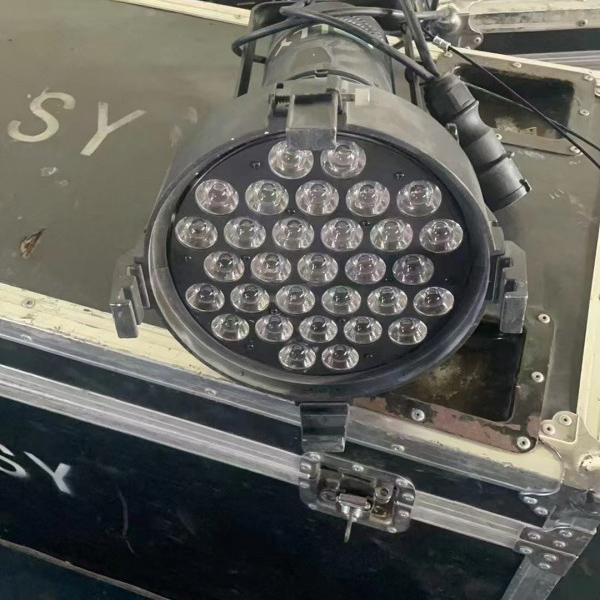Why Should I Trust Second-hand Stage Light For Professional Shows?
2025-11-14
When I plan tours, festivals, and corporate shows, I measure gear by outcomes on stage. Again and again, a well-vetted Second-hand Stage Light proves it can deliver the look I want. Over the years I’ve leaned on partners who refurbish and certify units, and one name keeps showing up—Hengshi. With that kind of backbone, I approach used moving heads, profiles, PARs, and Fresnels with the same discipline I use for new fixtures.
What problems does a Second-hand Stage Light actually solve?
- It compresses capital spend so I can scale the rig faster for bigger looks.
- It shortens lead times when new stock is unavailable or back-ordered.
- It unlocks proven models whose firmware and quirks are already known by techs.
- It reduces depreciation risk on gear that needs to tour hard and pay back fast.
I’ve seen a single Second-hand Stage Light upgrade a front-wash from “flat and safe” to “camera-ready” because I could afford more units and better placement.
How do I evaluate a Second-hand Stage Light without getting burned?
- Optics I check lens scratches, zoom travel, focus smoothness, and gobo sharpness across the field.
- Electrical I verify voltage range, power-up behavior, fan ramps, and any flicker at dimmer lows.
- Mechanics I run pan/tilt calibration, look for belt noise, and test homing after violent movement cues.
- Control I confirm DMX personality maps, RDM identification, and latency when spamming fast cues.
- Thermal I log temperature rise over a 30-minute full-output burn to spot throttling or fan faults.
- Cosmetic I note cosmetics for audience-visible truss positions; scars go to upstage or hidden towers.
If a Second-hand Stage Light passes those steps, it usually performs indistinguishably from a new one in a live mix.
Which specs matter most when I am choosing a Second-hand Stage Light?
- Output and optics Lumens are nice, but beam quality, CRI, and edge uniformity matter more on faces.
- Dimming curve I look for low-end smoothness for cameras and acoustic sets.
- Noise Fan and motor noise must fit the room; theaters tolerate less than festivals.
- Weight and rigging Trim height, ladder access, and local regulations decide how heavy I can go.
- Firmware lineage Stable firmware with available files and manuals saves show day drama.
Matching these to the room is where a Second-hand Stage Light beats a generic new fixture that looks good only on paper.
Which fixture fits my stage and audience best?
| Use Case | Recommended Fixture | Practical Notes | Why a Second-hand Stage Light Works |
|---|---|---|---|
| Corporate keynote with IMAG | LED profile or Fresnel with high CRI | Keep skin tones clean, avoid fan spikes during quiet moments | Quality optics already field-tested, savings let me double front fixtures for redundancy |
| Club show with beam looks | Moving head beam or spot with prisms | Fast pan/tilt and crisp aerials matter more than raw lumen numbers | Used units with fresh lamps/LED engines deliver the same punch at lower cost |
| Touring wash for mid-size venues | RGBW wash with zoom | Zoom range and color consistency across units beat spec-sheet max output | Savings fund spares, so I carry 10% extra and never lose a look |
| Theater drama | Silent or low-noise profiles | Fan curves and motor noise must be inaudible beyond the sixth row | Refurbished silent modes already proven in houses that demand quiet rigs |
How do I run the cost math so I do not overpay?
- Acquisition Invoice price plus shipping.
- Refurb New gobos, belts, filters, or a fan kit if needed.
- Show life Expected hours per week multiplied by lamp/LED lifespan and maintenance intervals.
- Resale A healthy used market lets me exit later with predictable residual value.
When I plug those into a simple spreadsheet, a certified Second-hand Stage Light often wins on total cost per show—especially when I need spares.
Can a Second-hand Stage Light meet broadcast or streaming requirements?
Yes, if I confirm three things: stable refresh to avoid rolling-shutter artifacts, predictable dimmer curves near black, and color consistency across units. With those locked, a Second-hand Stage Light reads perfectly on camera.
What proof do I ask for before I buy?
- High-resolution photos and a short test video of pan/tilt, zoom, dimming, strobe, and color macros.
- A written test report with hour counts and any replaced parts.
- Firmware version and a link to manuals or personality charts.
- Warranty window and turnaround time for service.
With documentation in hand, I can place a Second-hand Stage Light confidently into a cue-heavy show file.
Why does brand support still matter when I buy used?
Because parts availability and service diagrams decide how fast I recover during a failure. That is where partners like Hengshi help me sleep before load-in—consistent sourcing, clear paperwork, and realistic warranties on every Second-hand Stage Light I pick.
Where do I start today?
If you want the same predictable results, send me your room size, trim height, throw distance, noise tolerance, and target looks. I will map those to a short list and include side-by-side options where a Second-hand Stage Light outperforms a brand-new budget model.
Ready to talk about your rig?
I’m happy to share test videos, spec sheets, and a clear quotation. If you need fast delivery, say so and I will prioritize in-stock certified units. To move forward, contact us with your timeline and tech notes—let’s lock the look you want and keep the budget sane.
